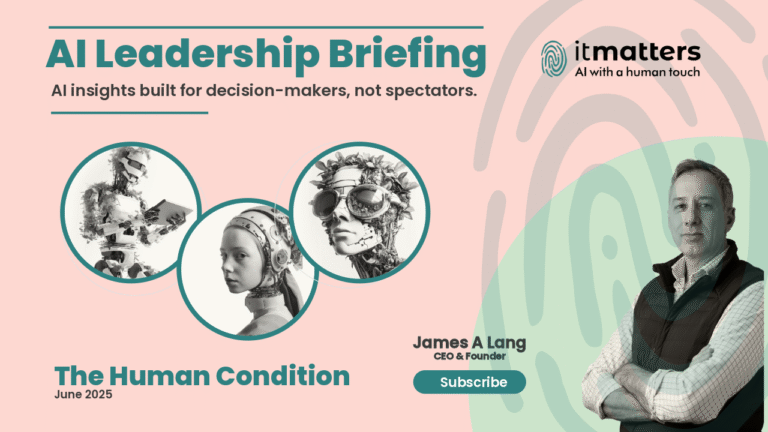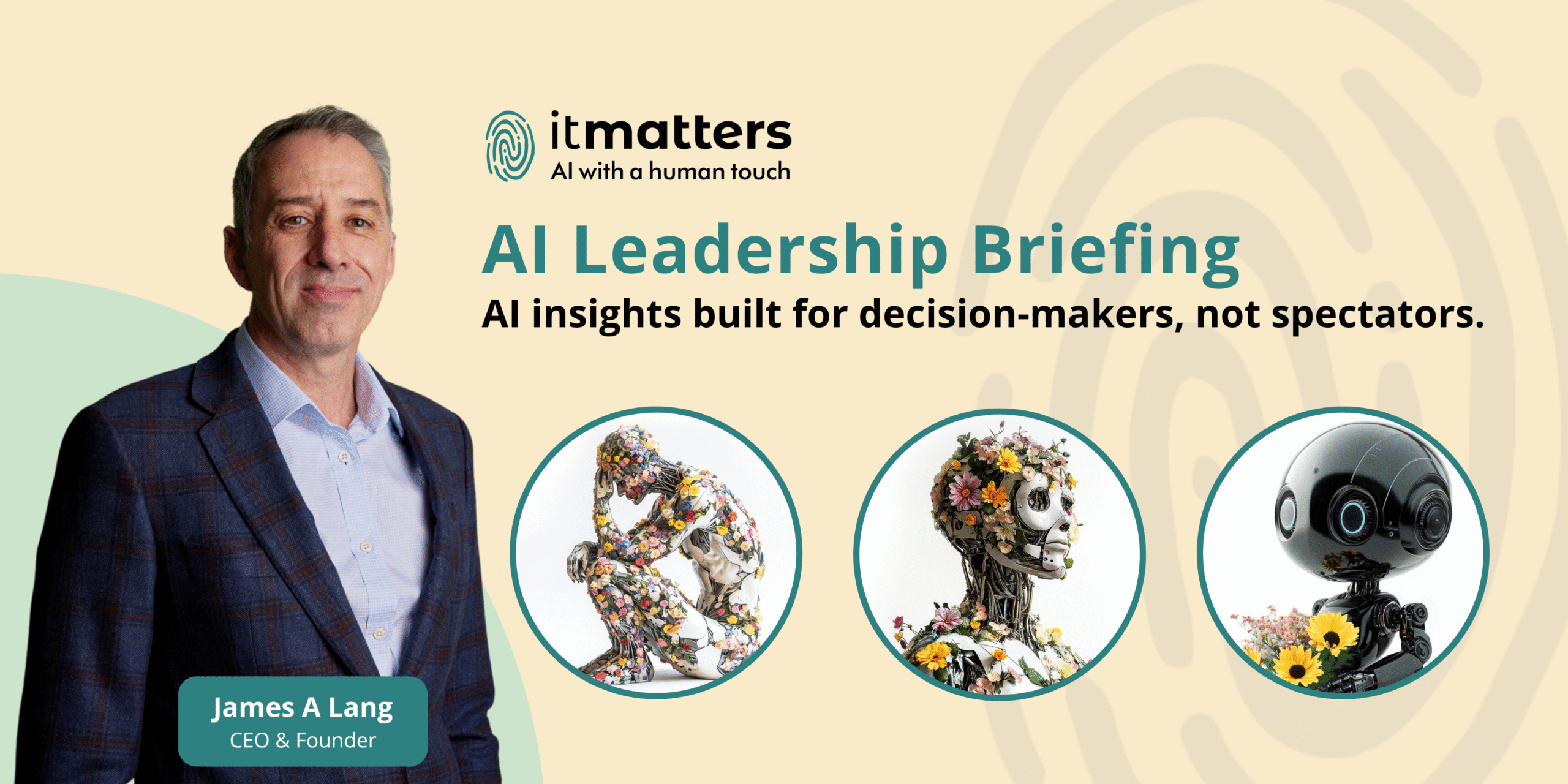Here is the Tuesday 10 June 2025 edition of The itmatters AI Leadership Briefing, continuing Week 2 – Synthetic Empathy in The Human Condition series.
The itmatters AI Leadership Briefing
AI insights built for decision-makers – not spectators.
Series: The Human Condition – Week 2: Synthetic Empathy
Edition Date: Tuesday 10 June 2025
Emotional UX: When AI Doesn’t Just Respond – It Persuades
Exploring Human-Centered AI in UX and Customer Experience
In today’s interface design, functionality is no longer enough. We now expect our apps, platforms, and tools to respond with empathy – or at least something that feels like it.
From banking apps that apologise with emotional tone to productivity tools that offer encouragement mid-task, AI in customer experience is evolving. UX design now includes synthetic empathy – AI-generated emotion baked into buttons, nudges, and micro-interactions.
The result? It feels personal. But it also subtly guides behavior.
And for leaders, that raises the question: Are we designing for user choice – or user compliance?
Reflective Human Insight
We once clicked to act.
Now we’re nudged to feel.
With emotionally responsive interfaces, AI systems don’t just deliver functionality – they shape emotional states. This shift from logic to feeling changes the dynamics of decision-making in subtle and powerful ways.
Today’s AI doesn’t just help users do something.
It helps them feel something first.
Today’s Tactical Signals
1. Microsoft Teams Launches Mood-Adaptive Feedback
New AI-powered features adjust feedback prompts depending on user tone in chats and meetings. An annoyed tone? The system softens its response.
Why it matters: Emotional UX reduces friction – but may also train users to mask discomfort.
(Microsoft 365, 2025)
2. Duolingo Adds “Encouragement Layer” for Retention
The app now uses AI to detect hesitation and deliver customised motivational responses – “Don’t give up, you’ve got this!” in emotionally calibrated tone.
Why it matters: Encouragement is now engineered – and used to extend engagement.
(Duolingo Research, 2025)
3. Klarna Introduces Empathic Checkout Flow
Klarna’s new payment experience adapts interface tone and visuals based on user behaviour, aiming to reduce abandonment during moments of indecision.
Why it matters: Emotion in UI becomes conversion strategy – not support.
(Klarna Labs, 2025)
4. Adobe Beta-Tests “FeelTone” AI Prompt Writer
In Adobe Express, AI now suggests copy not only by content, but by “emotional resonance” – encouraging writers to evoke calm, urgency, or joy depending on context.
Why it matters: Content becomes emotional architecture – but for what purpose?
(Adobe Creative Cloud, 2025)
5. NYU Study Finds Emotional UI Drives User Retention – But Blurs Perception
A new study shows emotionally responsive UX increases time-on-platform by 32% – but reduces perceived agency when users later reflect on choices.
Why it matters: If systems shape feelings without us noticing, are we still choosing – or being guided?
(NYU Center for Tech and Feeling, 2025)
Field Note from the Future
It is 2028. A young woman uses a financial coaching app.
It helps her stay on budget – with warmth, animated encouragement, and reassuring tone.
Six months later, she realizes she followed its prompts more than she questioned them.
She remembers the tone, not the terms.
Why it matters for leaders:
Emotional UX design can support clarity – or enable quiet coercion. Ethical leaders ensure the difference is visible.
Summary (Leadership Action)
As emotional AI becomes embedded in everyday systems, leaders must evaluate not just how AI works, but why it’s designed to feel a certain way.
Your leadership checklist:
- Ensure AI-powered UX serves clarity, not subtle persuasion
- Align emotional design with transparency and informed choice
- Equip teams to consider the ethical dimensions of affective computing
Emotional design without ethical boundaries becomes behavioral manipulation.
Historical Leadership Quote
“People ignore design that ignores people.”
– Frank Chimero
Orders of the Day
Subscribe to the newsletter to stay ahead of the AI curve.
itmatters brings you the clarity, context, and credibility needed to lead in a shifting world.
Tomorrow’s Preview
Therapy Without a Pulse – AI is entering mental health support. But care without presence is not enough.



